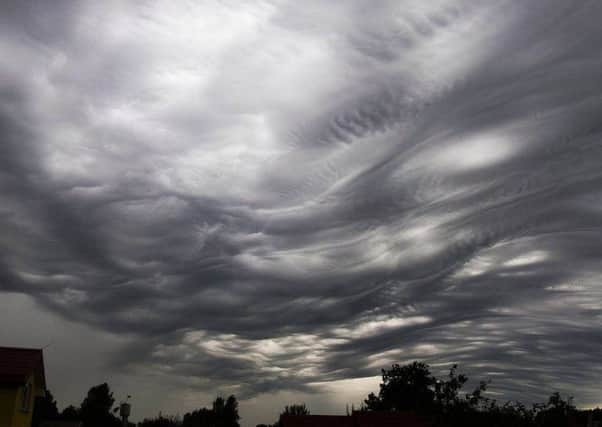New species of cloud given official names in cloud atlas


The wave-like volutus joins 14 other recognised cloud species, including stratiformus, nebulosus and lenticularis, in the 2017 edition of the World Meteorological Organisation’s Cloud Atlas.
The moniker will now be used by professional meteorologists around the globe.
Advertisement
Hide AdAdvertisement
Hide AdNew special clouds have also been listed, including flammagenitus, formed as a result of forest fires, and homogenitus, which appear over power station cooling towers.
Five more supplementary features of existing cloud types are also catalogued in the new inventory: asperitas; cavum; cauda, or tail cloud; fluctus, known as Kelvin-Helmholz wave; and murus, dubbed wall cloud.
“Throughout the centuries, few natural phenomena have inspired as much scientific thought and artistic reflection as clouds,” said WMO secretary-general Petteri Taalas.
“More than two millennia ago, Aristotle studied clouds and wrote a treatise addressing their role in the hydrological cycle. But it was Luke Howard, an amateur meteorologist living in England in the early 19th century, who produced the first classification of clouds.”
He added: “Identifying, describing and naming clouds remains critical to the study of weather and climate. Today scientists understand that clouds play a vital role in regulating the earth’s energy balance, climate and weather.”
Rob Varley, chief executive of the Met Office, said: “Clouds play a key role in the function of our planet’s climate system, and the naming of the new volutus species of cloud shows we are continually learning and developing our understanding.”
The International Cloud Atlas was first published in the late 19th century and was last updated in 1987. The 2017 edition will primarily be a web-based portal, though it may be published in hard copy.
The present international system of Latin-based cloud classification has been used since 1803.
Advertisement
Hide AdAdvertisement
Hide AdThere are ten basic cloud genera, defined according to where in the sky they form and their approximate appearance – including alto, cirrus, cumulus, nimbus and stratus.
These are subdivided into species, which describe shape and internal structure, and varieties, which describe their transparency and arrangement. In total there are around 100 combinations.
Volutus, or roll cloud, occurs within the genera altocumulus and stratocumulus. It is a long, typically low, horizontal tube-shaped cloud mass that often appears to roll about a horizontal axis.